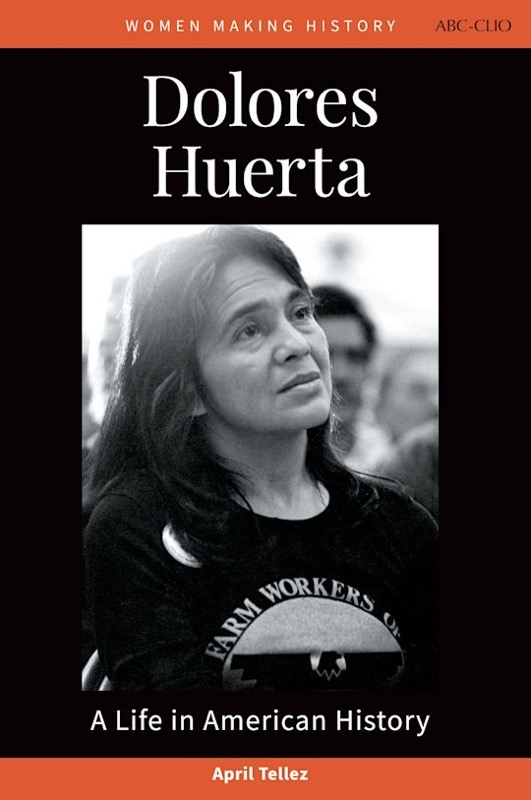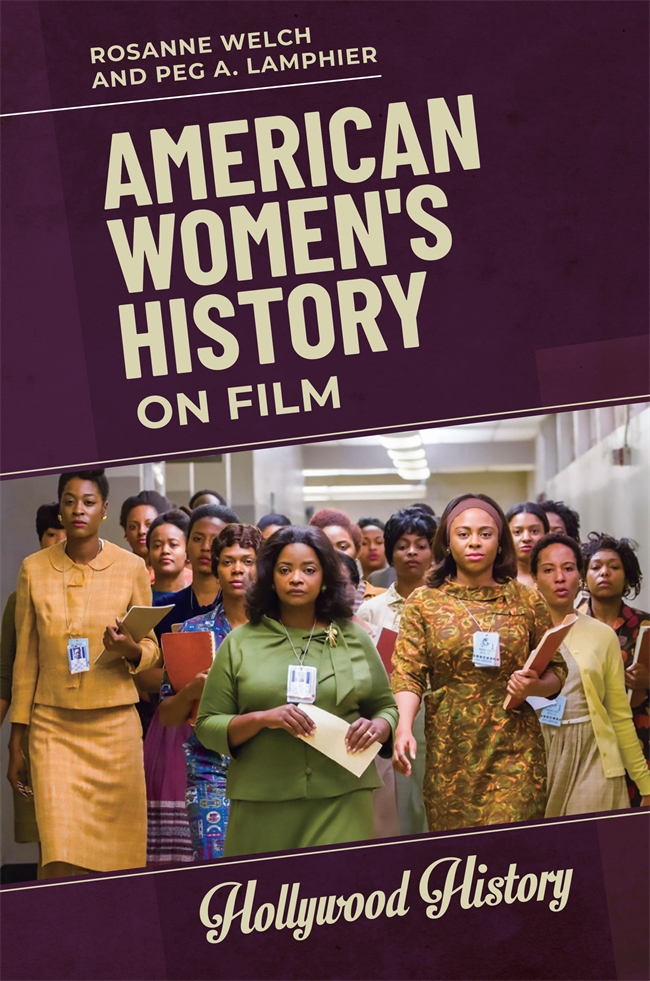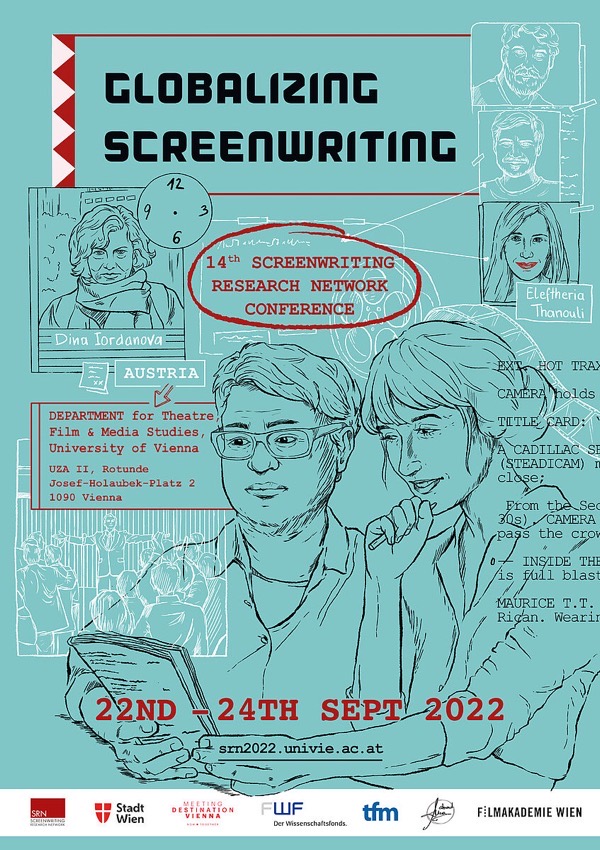Series co-editor Peg Lamphier and I are proud to congratulate author April Tellez on the publication of her first book with our “Women Making History” series from Bloomsbury. Dolores Huerta: A Life in American History is now available from their website and can be ordered from any independent bookseller you frequent. It’s a great time to read about a woman who is “one of the great contributors to American history, labor history, women’s history, and the history of activism, social justice, and human rights. Here, her story is told in a way that captures the full span of her life and achievements.”
April’s background as a history professor at Mt. San Antonio College who specializes in Chicanx, Native American, Women’s histories and in cultural resistance to settler colonization made her the perfect author for this book. We thank her for all the time and dedication it took the research (during Covid) and can’t wait for new readers to learn more about Dolores Huerta and all she’s done for fairness and equality for workers. She deserves her own national holiday!

Buy Today at Bloomsbury Press | Bookshop.org | Amazon
A comprehensive exploration of Dolores Huerta’s contributions to U.S. labor history and her life’s work of advocating for systematically disadvantaged and marginalized groups.
An iconic figure in American civil rights and one of the most influential labor rights activists of the 20th century, Huerta overcame great odds to make enduring contributions to social justice and advocacy, particularly for farm workers and the Latino community. Organized chronologically, this volume offers the opportunity for readers to better understand Huerta’s life. From her early beginnings in California’s central valley, to her influential leadership on the United Farm Workers (UFW) union, to her work educating on women’s issues and advocating for Latino representation in politics, readers will explore the many efforts that made Huerta’s influence enduring. Beyond a biography, this book places Huerta center stage in the context of American history, looking closely at the Chicano civil rights movement in California; social restrictions, disenfranchisement, and various forms of segregation in 1950’s and 1960’s America; historical labor strikes and boycotts; key legislation and political figures active in labor rights, and more. Huerta is one of the great contributors to American history, labor history, women’s history, and the history of activism, social justice, and human rights. Here, her story is told in a way that captures the full span of her life and achievements.
Buy Today at Bloomsbury Press | Bookshop.org | Amazon
![Dolores Huerta: A Life in American History by April Tellez, Edited by Dr. Rosanne Welch an Dr. Peg Lamphier [Books]](https://rosannewelch.com/wp-content/uploads/2025/02/9781440872969-1.jpg)

![Join Dr. Rosanne Welch for a Free Web Conversation on Writing as Activism, Friday, April 7, 2023 [Online]](https://rosannewelch.com/wp-content/uploads/2023/03/WritingAsActivism.png)


![15 Conclusion From Jeanne to Suso to Julie to Spike: How Jeanne Macpherson’s Manual on Screenwriting Influenced Italian Realism which Influenced Black Independent Film in the U.S. [Video]](https://rosannewelch.com/wp-content/uploads/2023/01/rmw-srn-vienna-2022-15.jpg)


![14 Julie Dash and Spike Lee From Jeanne to Suso to Julie to Spike: How Jeanne Macpherson’s Manual on Screenwriting Influenced Italian Realism which Influenced Black Independent Film in the U.S. [Video]](https://rosannewelch.com/wp-content/uploads/2023/01/rmw-srn-vienna-2022-14.jpg)
![13 Bless Their Little Hearts From Jeanne to Suso to Julie to Spike: How Jeanne Macpherson’s Manual on Screenwriting Influenced Italian Realism which Influenced Black Independent Film in the U.S. [Video]](https://rosannewelch.com/wp-content/uploads/2023/01/rmw-srn-vienna-2022-13.jpg)
![12 Martin Scorcese From Jeanne to Suso to Julie to Spike: How Jeanne Macpherson’s Manual on Screenwriting Influenced Italian Realism which Influenced Black Independent Film in the U.S. [Video]](https://rosannewelch.com/wp-content/uploads/2023/01/rmw-srn-vienna-2022-12.jpg)
![11 Charlie Burnett and "Killer of Sheep" From Jeanne to Suso to Julie to Spike: How Jeanne Macpherson’s Manual on Screenwriting Influenced Italian Realism which Influenced Black Independent Film in the U.S. [Video]](https://rosannewelch.com/wp-content/uploads/2022/12/rmw-srn-vienna-2022-11.jpg)
![10 Claudine From Jeanne to Suso to Julie to Spike: How Jeanne Macpherson’s Manual on Screenwriting Influenced Italian Realism which Influenced Black Independent Film in the U.S. [Video]](https://rosannewelch.com/wp-content/uploads/2022/12/rmw-srn-vienna-2022-10.jpg)